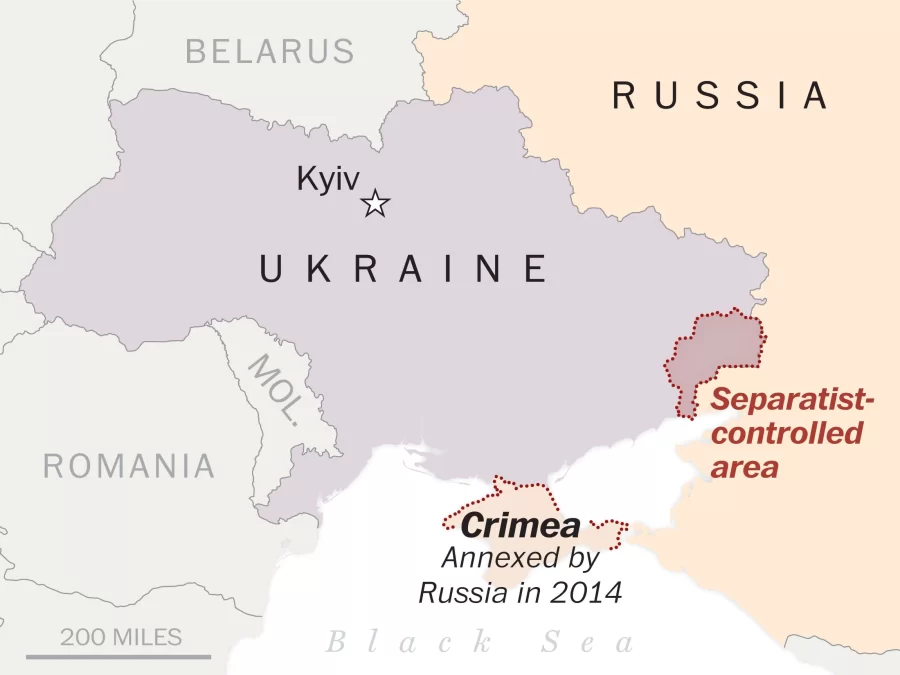A Summary of the Russia-Ukraine Conflict
Recent events in Crimea have created problems for other countries in both Europe and North America
The conflict between the two countries can be traced to 2014, after a series of protests arose due to Ukraine’s then-president, Victor Yanukovych, choosing closer ties to Russia over a free-trade deal with the European Union. After the Ukrainian parliament voted to impeach Yanukovych in Feb. 2014, the former president fled to Russia, claiming his removal was a “coup.”
That same month, Russian troops were sent to take over Ukraine’s Crimean Peninsula and capture parliament and government buildings. Then in March, the regional parliament held a referendum after two weeks of Russian military occupation, where over 95% of parliament had voted to join the Russian Federation.
Crimea had been formally annexed on March 18, but the annexation was illegal according to a non-binding resolution adopted by the United Nations. The Group of seven had also responded to the annexation by removing Russia as a member of the forum.
By March 30, all Ukrainian troops had left the Crimean Peninsula, leading to an increase of Russian military presence and nuclear threats to solidify the status of Crimea. In April, Pro-Russian separatists had taken over the Donbas region of Eastern Ukraine, which led to sanctions on individuals and companies involved with the movement in Donbas and the annexation of Crimea by Canada.
In Nov. 2021, satellite imagery discovered masses of Russian troops around Ukrainian borders. Ukrainian President Volodymyr Zelensky claimed that Russia had mobilized 100,000 soldiers near the border, along with heavy military equipment.
On Dec. 7, U.S. President Joe Biden spoke with Russian President Vladimir Putin to discuss the conflict along with the eastward expansion of the North Atlantic Alliance (NATO). Putin had pushed to stop the expansion while Biden threatened economic sanctions if Russia were to invade Ukraine.
On Jan. 2, 2022, Biden stated in a call with Zelensky that the U.S. and allies would “act decisively” if Russia attempted an invasion. On Jan. 26, Canada extended Operation UNIFIER, in which 200 Canadian Armed Forces members would be sent to Ukraine every 6 months, for three more years.
On Feb. 2, the U.S. announced the deployment of 3000 troops to Poland, Germany, and Romania. On Feb. 7, French president Emmanuel Macron talked with Putin in Moscow while German Chancellor Olaf Scholz met officials in Washington to attempt a diffusion of the standoff in Ukraine.
As of Feb. 11, NATO forces have been put into several countries near Ukraine such as Romania and Poland. The current state of this crisis could lead to major events in the future, raising levels of the importance of a possible invasion.




